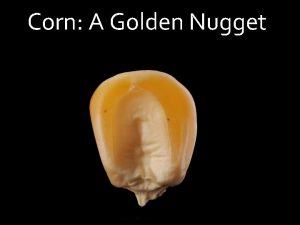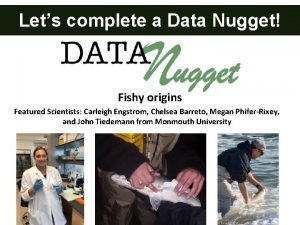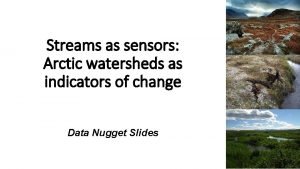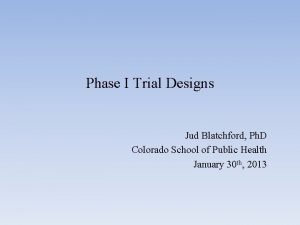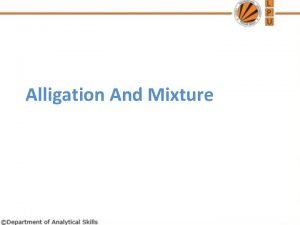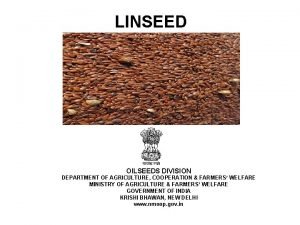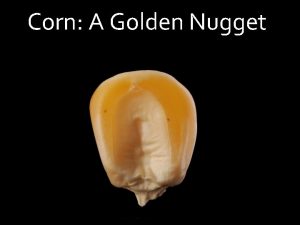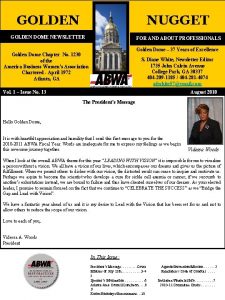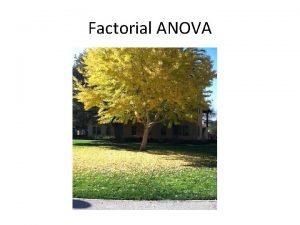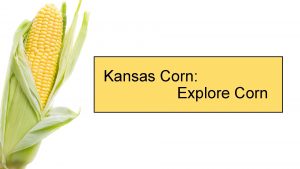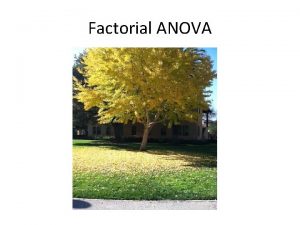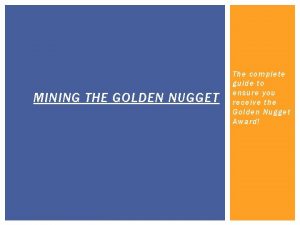Corn A Golden Nugget Different corn varieties are













- Slides: 13

Corn: A Golden Nugget

Different corn varieties are grown to meet various food and production needs. Corn is classified by its kernel type. Field Corn Sweet Corn Popcorn Flour Corn Flint Corn

Field Corn, also known as dent corn, is the most widely grown corn in the United States. It is very starchy, giving it a bland flavor and a mealy texture. It is used for animal feed, corn syrup, fuel, and biodegradable plastics.

Sweet Corn Sweet corn is harvested during its immature, milk stage when the kernels are tender and before the normal conversion of sugar into starch can take place. It is eaten fresh off the cob or can be canned or frozen for future use.

Popcorn has a dense, soft starch surrounded by a hard, moisture-resistant shell. When popcorn is heated, the moisture inside the kernel expands, building up enough pressure for the kernel to explode. Popcorn is thought to be one of the oldest surviving types of corn.

Flour Corn Flour corn is used in baked goods. The entire kernel of flour corn is soft. Once the kernel is dried, it is can be easily ground. The use of flour corn can be traced back to the Aztecs and Incas.

Flint Corn Flint corn, also known as Indian corn, is used for ornamental purposes. It is not grown in large quantities in the United States.

Corn Kernel Structure

Cross Section of a Corn Kernel Pericarp Endosperm Germ Tip Cap

The Endosperm The endosperm represents approximately 75 to 80 percent of the kernel’s dry weight. It is the source of energy (starch) and protein for the germinating seed. There are two types of endosperm, soft and hard. In the hard endosperm, the starch is loose. When the dent corn dries in the field before harvest, the moisture loss causes the soft endosperm to collapse and form a dent in the top of the kernel.

Pericarp The pericarp is the outer, protective covering of the kernel. It resists water and water vapor and is undesirable to insects and microorganisms.

The Tip Cap The tip cap is the only area of the kernel not covered by the pericarp. It was the attachment point of the kernel to the cob and the major entry path into the kernel for water and nutrients. Tip Cap

The Germ The germ is the living embryo of the corn kernel. It contains the essential genetic information , enzymes, vitamins, and minerals for the kernel to grow into a corn plant. About 25 percent of the germ is corn oil. Corn oil is the most valuable part of the corn kernel because it is high in linoleic fatty acid (polyunsaturated fat) and it has a mild taste.
 Golden nugget corn
Golden nugget corn Mikael ferm
Mikael ferm Which process produces only identical offspring?
Which process produces only identical offspring? Data nugget fishy origins answer key
Data nugget fishy origins answer key Chicken nugget herstellung
Chicken nugget herstellung Data nugget worksheet answers
Data nugget worksheet answers Data nugget streams as sensors answers
Data nugget streams as sensors answers The largest gold nugget ever found had a mass of 100 ____.
The largest gold nugget ever found had a mass of 100 ____. The last supper golden ratio
The last supper golden ratio Golden ratio and golden rectangle
Golden ratio and golden rectangle Chapter 6 varieties of drama
Chapter 6 varieties of drama Language dialect and varieties in sociolinguistics
Language dialect and varieties in sociolinguistics Alligation of mixture problems
Alligation of mixture problems Rice photos
Rice photos
